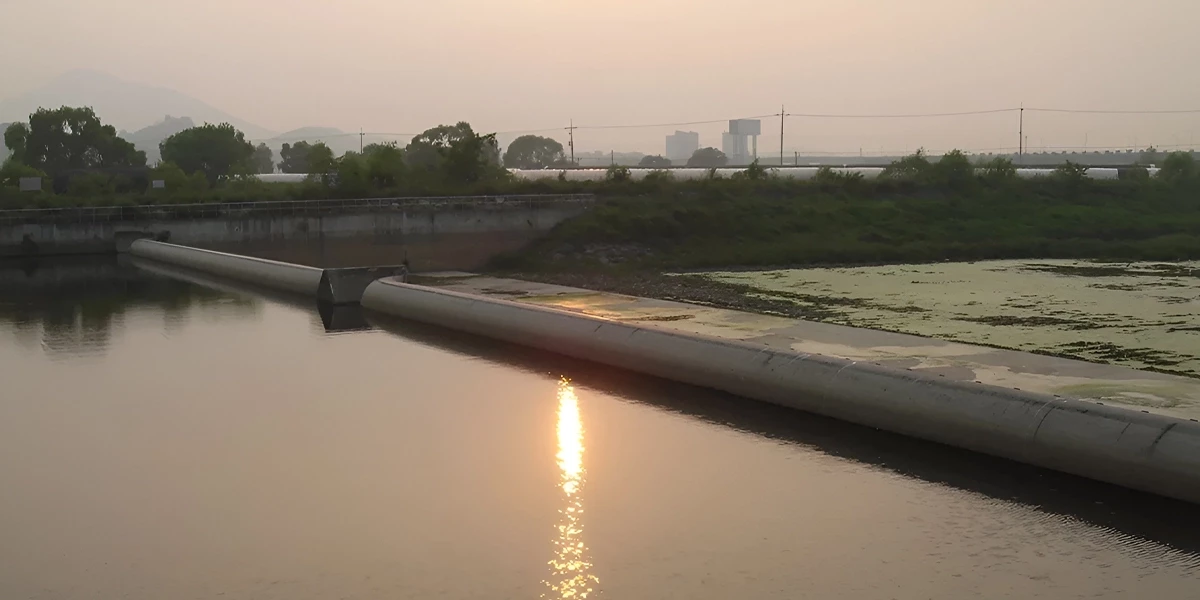

Modern nations face long-standing water management problems for which new innovative solutions continue to emerge to develop efficient, sustainable methods of water storage, flood protection, and irrigation systems. The utilization of rubber dams has become increasingly popular because they provide versatility, efficiency and environmental advantages in addition to affordable installation. Indian development in infrastructure along with water conservation practices, has resulted in growing rubber dam adoption.
The rubber dam represents a flexible portable barrier system that controls water flow and collects water resources while safeguarding against floods when placed across river banks and canal systems. The unique feature of rubber dams differentiates them from conventional concrete barriers as they allow effective water management capabilities.
The diverse geographical areas and climatic variations allowed researchers to find innovative solutions that address problems of water conservation, together with flood control issues through the rubber dam in India. Modern hydrological systems integrate these structures because they enhance water storage capacity for irrigation and power generation, and urban water supply functions.
Exploring the three distinctions of multiple rubber dam types: their construction methods, operational mechanics, and intended purpose. The most common types include:
Inflatable Rubber Dams use air or water to inflate themselves when controlling river and stream flows. These rubber barriers display exceptional flexibility because their size changes according to seasonal needs.
The rubber dam water filled operates with water as its stored substance to accommodate efficient control of fluctuating water levels for applications.
The design of air-filled rubber dams allows environmental changes in different operational conditions through air pressure control procedures.
These water retention devices maintain a static height position throughout their use for creating semi-permanent water barriers.
Tap rubber dams enable industries to benefit from innovative water conservation methods as well as controls through their diverse applications. The main uses of rubber dams occur:
Rubber dams collect water for agricultural purposes through irrigation management and provide sustained irrigation support even in times of dry seasons.s
Rubber dams serve to regulate water surges that protect settlements from flooding as they reduce severity of floods in cities as well as countryside locations.
Environmental Conservation depends on rubber dams to stop saline water from entering coastal habitats, which safeguard freshwater reserves and agricultural territories.
The appropriate water levels in reservoirs, coupled with an uninterrupted municipal water supply, are maintained through the implementation of rubber dams.
The method to build rubber dams consists of an easy yet modern construction process. The dam body contains high-strength synthetic rubber which gets reinforced through multiple fabric layers to increase durability. The rubber dam uses a concrete foundation that securely attaches to the riverbeds for durability and stability. The construction process of rubber dams takes only months and results in both quicker project completion and reduced expenses and environmental consequences.
The rubber dam advantages extend beyond monetary conservation. At present, gravitational rubber dams have become the preferred choice for water resource management because they provide numerous benefits to users.
India has developed rubber dam technology through multiple large-scale projects that are now present across different regions. The longest rubber dam in India stands as a testament to the nation’s commitment to sustainable water management. The gigantic structure stretches over an extensive distance to serve as a control mechanism for water flow and protect against floods while enabling irrigation systems in the area. Rubber dams have gained significant momentum as an acceptable water control method alternative through these particular projects.
The leading water infrastructure development company, Yooil Envirotech, leads innovation through its advanced rubber dam technology platform. The company maintains a dual emphasis on creative approaches and environmentally friendly practices when giving advanced solutions regarding flood control and irrigation, alongside urban water management. The combined expertise in rubber dam construction and maintenance of Yooil Envirotech has established it as an industry leader that offers individualized solutions for customers worldwide including throughout India.
The need for rubber dams as sustainable water management solutions will increase in India due to its ongoing water-related problems. Their versatility, cost-effectiveness, and environmental benefits make them a crucial asset for addressing irrigation demands, flood control, and water conservation. With companies like Yooil Envirotech leading the way, the future of rubber dam technology in India looks promising, paving the way for a more sustainable and water-secure future.
Rubber dams represent a modern and sustainable approach to water management, offering numerous advantages over traditional dam structures. From irrigation and flood control to hydroelectric power generation and urban water supply, their applications are vast and impactful. With the continued adoption of rubber dam technology in India, facilitated by industry leaders like Yooil Envirotech, the country is set to enhance its water conservation efforts and infrastructure development for years to come.
